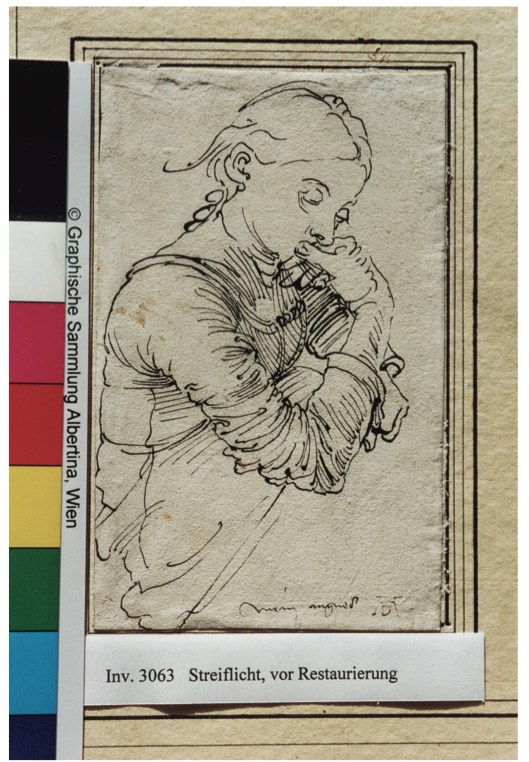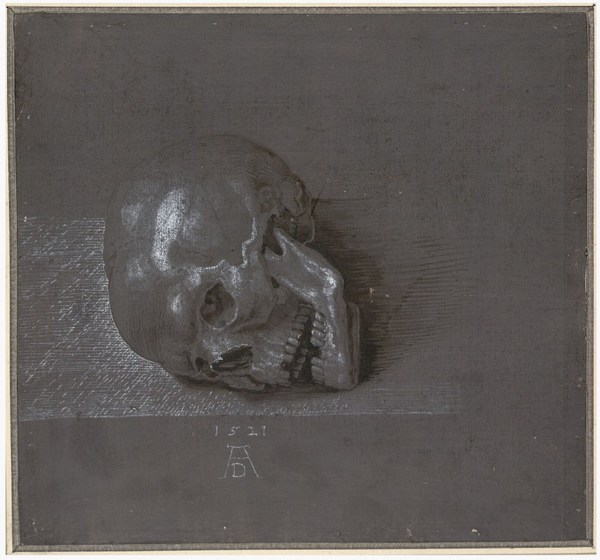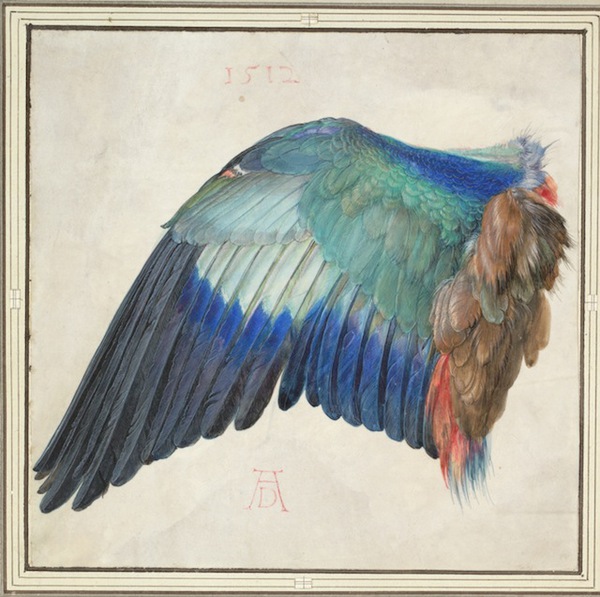
It still feels a little precious and Slate-pitchy to say it, but two of my favorite things about the National Gallery's extraordinary exhibition of Albrecht Dürer drawings from the Albertina are the mats and the paper.
And I say that fully admitting that both times in the show, Dürer's works leave me feeling like I chose the wrong Renaissance (Southern) for my art history degree in college. The power and presence and detail of seeing Dürer's marks in person and in depth is something that slideshow seminars can't approach.
And these particular aspects of the works that caught my attention are also those that go undiscussed, or get ignored or cropped out of reproductions, catalogues, too, including the NGA's. So it's been hard to follow up on my own, or to find reference images. And the NGA's restrictions on taking photos of 500-year-old artworks hasn't helped.
I posted a bit about Dürer's prepared paper already. My favorite is the blue wash, which was apparently an attempt to replicate the color of the unique blue rag paper the artist found on his trip to Venice.
In Hyperallergic Weekend, Thomas Micchelli made the superclose observation that these papers behave differently; ink marks made on painted/prepared paper sit more crisply on the surface, while those on carta azzurra, whose color is infused, soak in and soften a bit. I will have to go back and look now.
But I guess the intriguing thing for me is imagining Dürer basically painting a monochrome, which he then happens to draw on. I know, it's a bit perverse. But it's also something he did over and over. The Albertina's online collection database includes examples of many other colors that Dürer used over the years: red-brown, grey, green, brown, blue over pink, even violet. Like on this study of a skull from 1521 (Albertina Inv. 3175).
The skull also shows a bit of the ink border that someone, at some point, seems to have drawn around the Albertina's works. A few dark works, like the grauviolet ones, have wide, thinly brushed borders, but most have a single pen line. These are not often reproduced, but they are visible in the Albertina's online database. They seem to echo the border of etchings, Dürer's most renowned medium. They're also just the beginning.
The Albertina drawings all have additional, concentric lines drawn on the mounts and mats, like little frames. Some are decorated, or hashed, but most are just plain. Still, it's that they exist, the remnant of someone's decision to augment the works of one of the Renaissance's greatest artists for public display.
Until Micchelli's Hyperallergic piece, the only image I could find was the top, from a restoration report for Agnes Mine, Dürer's portrait of his fiancee. But check out the drawn frame on two of Durer's most celebrated works: The Great Piece of Turf. Then notice those decorations on the frame around Left Wing of a Blue Roller.
Between the background washes and these inked frames, I started imagining an entirely monochrome, abstract version of the Dürer show; sort of a Stephen Prina-style The Complete Works on Paper of Albrecht Dürer. As soon as I can track down any more info on just how Dürer prepared his paper, I'll try one out.
Dürer in DC: Some Observations on the Great Observer [hyperallergic]
Albrecht Dürer: Master Drawings, Watercolors, and Prints from the Albertina runs through June 9, 2013 [nga.gov]
Abertina Sammlungenonline [albertina.at]















